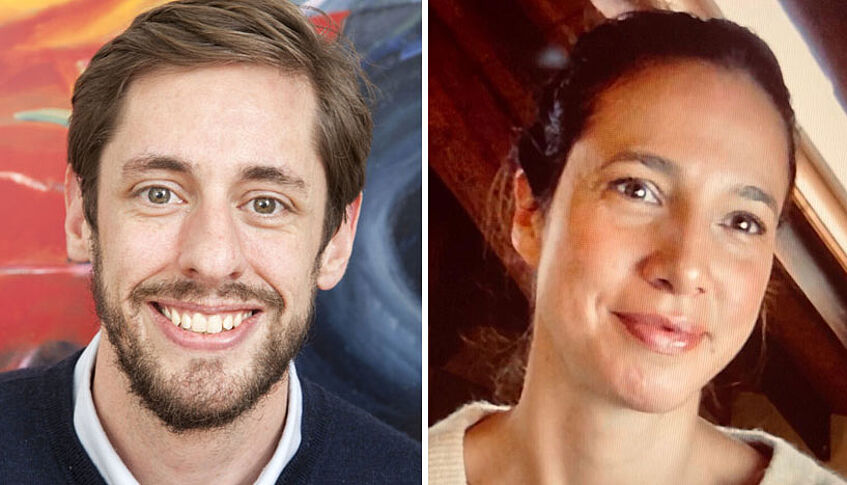
Full title of the project: "Artistic blossoms in Parkinson patients: A study investigating experienced changes in artistic and other creativity and its connection to Parkinson's disease".
Team: Asst.-Prof. Dr. Matthew Pelowski (AT, picture on the left), Mag. Blanca T.M. Spee, M.Sc. (AT, NL, picture on the right), Prof. Dr. B.R. Bloem, MD, PhD, FRCPE (NL).
Portions of the project are funded by the FWF (#ConnectingMinds program) and the OeAD (Marietta Blau grant).
Institute/Department: University of Vienna, Department of Cognition, Emotion, and Methods in Psychology and the Vienna CogSciHub, as well as the Radboud University Medical Center, Nijmegen (Netherlands), Center of Expertise for Parkinson & Movement Disorders.
Goal of the project: Emerging evidence suggests that people with Parkinson's disease may suddenly become more creative or are interested in visual art. Why? Our objective is to identify contextual factors (medication, personality, life history, etc.) that might explain changes, via a large-scale survey of people with Parkinson's disease.
Why is this important and useful? The transdisciplinary project combines art research and medicine to investigate how creativity is anchored in the brain; to find out why the feeling of being creative and the motivation to engage in creative activities change during the course of an illness; and to develop creativity-based art therapies based on the results.
Abstract: Parkinson's disease, the world’s fastest growing neurodegenerative disorder, progressively impacts the functioning of the brain and comes with a range of motor and non-motor deficits requiring new advances in research and treatment. At the same time, observations have shown that some people diagnosed with Parkinson’s experience a sudden emergence or reawakening of creative behavior. Evidence is mainly coming from case reports and small survey-based studies suggesting that up to 19% experienced an increase in creativity. Taken together, the evidence suggests a complex interplay between brain-dysfunction, medication, cognitive/affective traits, and creative expression. However, none of the studies systematically explored influencing contextual factors delivering insight into why some experience creativity changes and others do not. Our aim is to identify decisive factors for these creativity changes to find anchor points for a working mechanism and future empirical investigations.
Explanation - easy to understand: Creativity and art are deeply rooted in the human being. Researching how creativity develops in the brain can also provide important insights for other research on the brain. In this current project, an attempt is being made to combine medicine, art and therapy. Thus, by dealing with the topic of creativity, knowledge about Parkinson's disease should also be improved.
Link: https://artis.univie.ac.at/activities/connectingminds-workshop/
